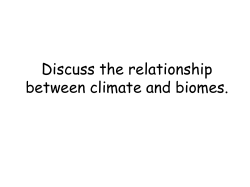
JP CARROLL ROOFING Technical Bulletin Subject: Leaking Due to
1 JP CARROLL ROOFING Technical Bulletin Subject: Leaking Due to Ice Damming As many of you know we find ourselves once again in the middle of a severe winter with heavy snow fall and sustained cold temperatures well below 32 degrees. The month of February has had the coldest average day/night temperatures since records began being kept in 1879. Snow load with sustained cold temperatures, aided by excessive heat loss (Lack of R-Value of insulation) are the three key ingredients needed to build ice dams at the gutter line. (See Diagram A on pg.3) The Ice Dam holds back a body of water that not only exceeds the performance rating of the ice and water shield installed underneath the shingles, but it also enters the roof cavity at the joint between the sheathing of the roof deck and the fascia. (See Diagram B.) B Standard roofing practice in this region is designed to prevent water entry given nominal snow and ice that typically forms at roof edges but cannot survive the standing water that exists behind the ice dam. With these conditions being a major factor in four out of the last five winters here in Southern New England the question becomes; how can we prevent this damage from happening again? A good start is to replace the roofing system with a strong schedule of 6 feet of ice and water shield membrane to protect the roof surface under nominal conditions of ice and snow. To protect the home in severe conditions two other remedies must be considered. 1. Comprehensive energy studies can be conducted that measure insulation ratings among other things is a good place to start. By increasing the “R value” in your attic (Building Code R-38) will slow down heat loss and prevent the melting of the snow load creating the fuel for the development of the ice dam. A bonus to this is lower home heating costs. Here is a list of two reputable sources to get an energy study done on your home. (See pg. 4 for an example of a properly insulated structure versus a poorly insulated one. a. Connecticut Light and Power- 860-947-2000 b. Dr. Energy Saver of Connecticut- 1-888-532-9120 2 2. When attic space is not readily available in your home i.e. Cathedral Ceilings, other measures have to be taken to protect your home from ice dams. A good example of this is the installation of heat cables at the leading edge of your roof and gutters in order to channel openings to allow standing water to flow from behind the ice dams off of your roof. (See Diagram C). Here are two companies that are reputable installers of heat cables on roofs in CT. a. Venora Electric- (860) 242-8081 b. CT Ice Dam Solutions-877-705-1356 C In summation, the standard roofing practice using ice and water shield as a preventative measure to stop leaks caused by ice damming cannot survive the pooling of standing water until the secondary measures are addressed by the homeowner. Exposure to leaking as a result of ice damming will continue under severe weather conditions such as this year in certain critical areas of the roof based on slope, exposure, and shade. Sincerely, Owner, President James Carroll 3 A 4 Properly Insulated Poorly Insulated
© Copyright 2025









